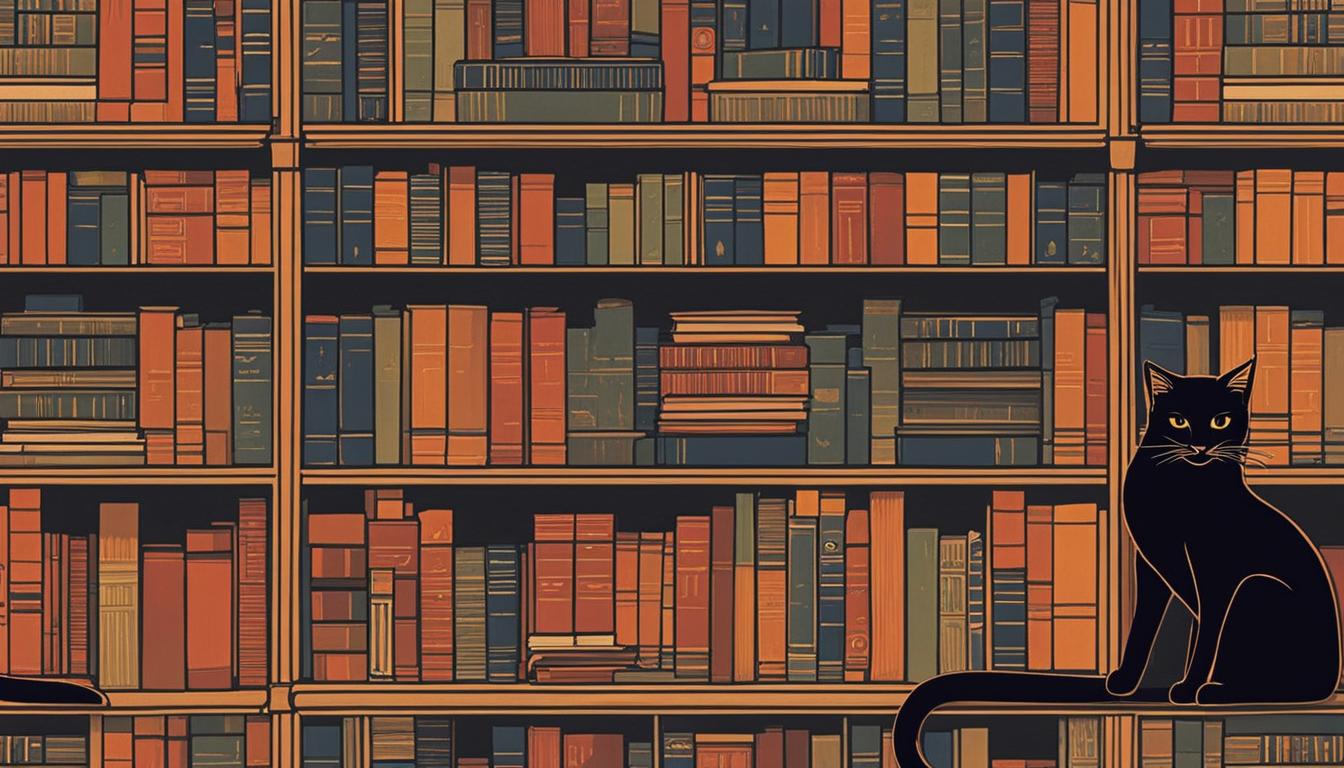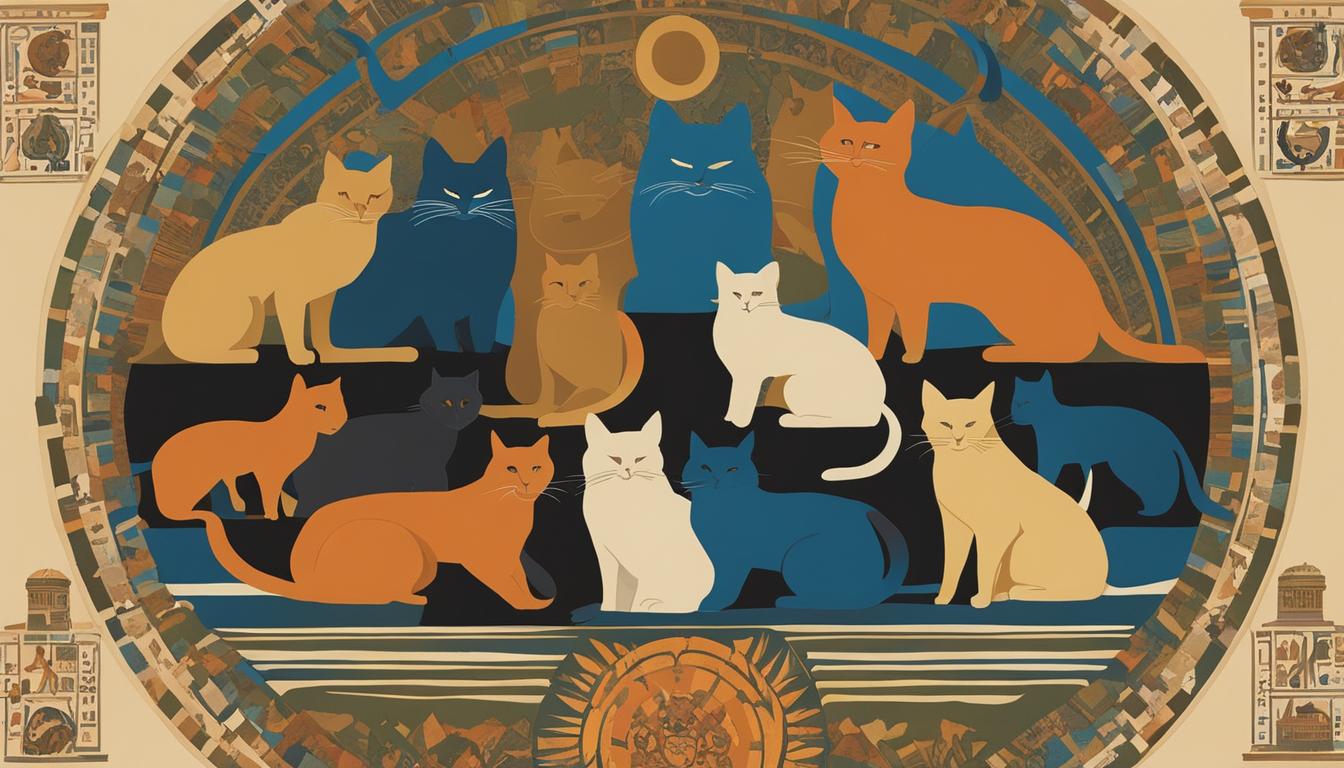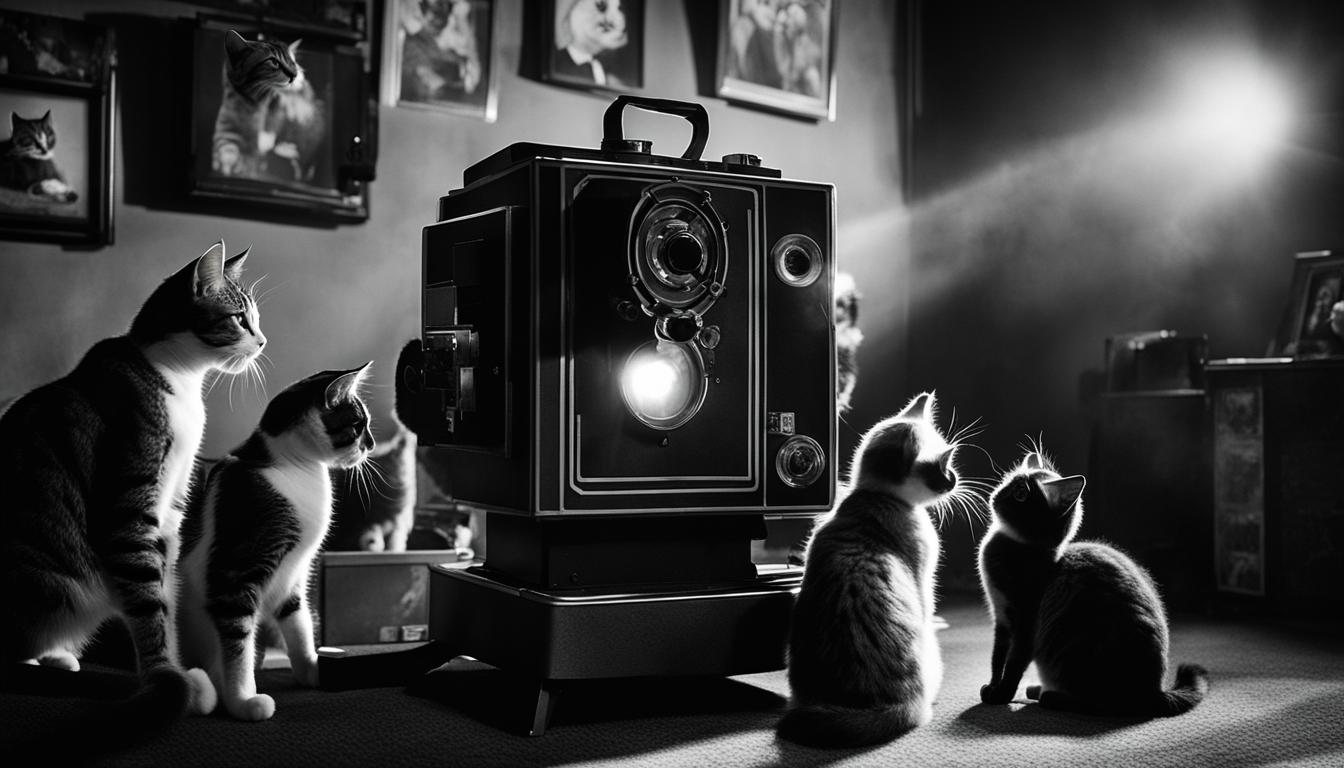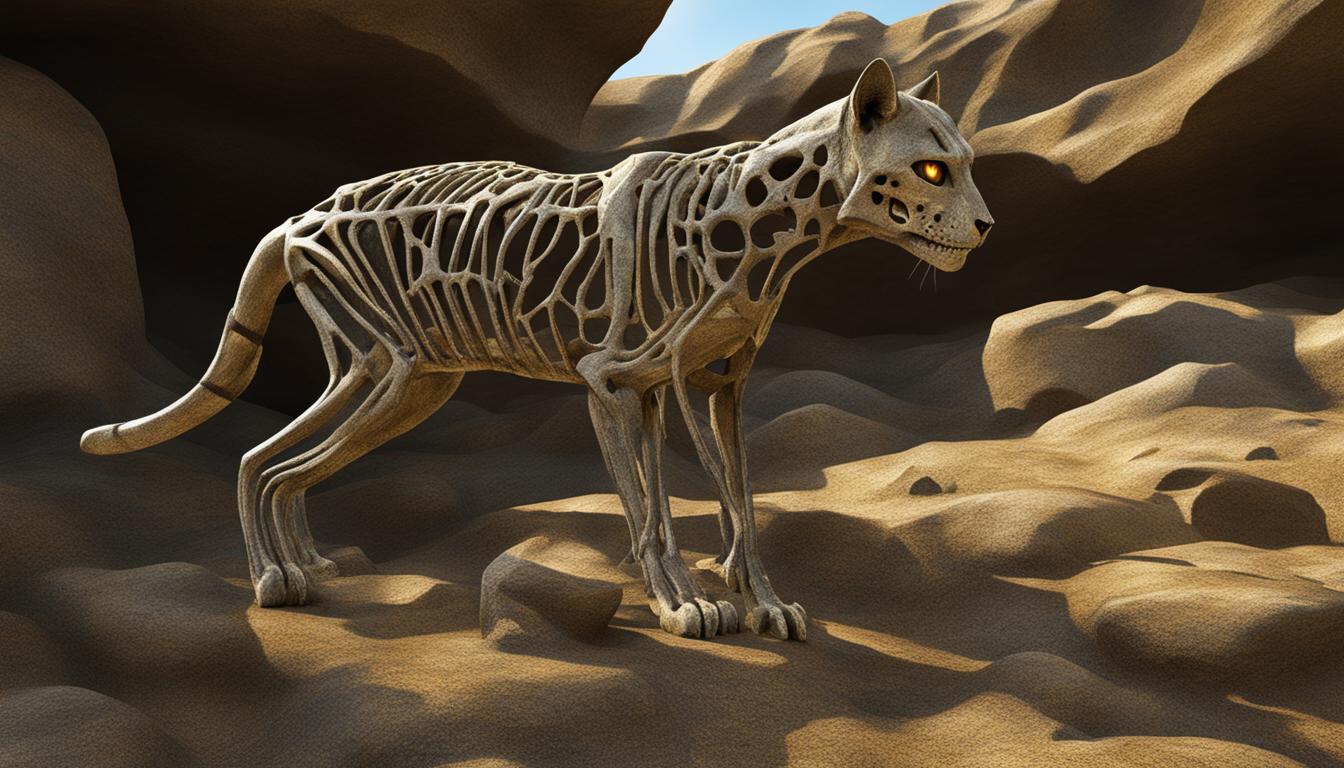Cats have always held a special place in the world of literature. From ancient tales to modern novels, these enigmatic creatures have weaved their way into the hearts of readers throughout history. Join me as we delve into the fascinating realm of cats in historic literature, exploring the fictional cats and iconic feline characters that have graced classic works of literature.
Key Takeaways:
- Cats have played significant roles in literature for centuries
- Fictional cats in literature have become beloved characters
- Classic works of literature feature iconic cats
- Cats in historic literature add depth and intrigue to stories
- Cats hold a unique position as both symbolic and literal characters in literature
Cats in Children’s Books
Cats have been enchanting young readers for generations through their delightful appearances in children’s literature. These whimsical feline characters have captivated the imagination of children and adults alike, leaving a lasting impression with their mischievous antics and endearing personalities.
One iconic example is Lewis Carroll’s Cheshire Cat from the beloved classic Alice’s Adventures in Wonderland. Known for its mischievous grin and disappearing act, the Cheshire Cat has become a symbol of curiosity and playfulness. Its memorable dialogue with Alice, such as the famous line, “We’re all mad here,” adds a touch of whimsy to the story.
Another beloved feline character is the mischievous Cat in the Hat created by Dr. Seuss. With its distinctive red and white striped hat, this cat brings chaos and excitement to the lives of two children on a rainy day. The Cat in the Hat teaches children the importance of imagination and creativity, making it a cherished character in children’s literature.
The Cheshire Cat’s Memorable Quotes:
“I can’t go back to yesterday because I was a different person then.”
“Imagination is the only weapon in the war against reality.”
“We’re all mad here.”

Table: Famous Cats in Children’s Books
| Book | Cat | Characteristics |
|---|---|---|
| Alice’s Adventures in Wonderland | Cheshire Cat | Mischievous, mysterious, and wise |
| The Cat in the Hat | Cat in the Hat | Playful, adventurous, and imaginative |
| Puss in Boots | Puss in Boots | Clever, resourceful, and charming |
| The Jungle Book | Bagheera | Loyal, wise, and protective |
These beloved feline characters in children’s books have not only entertained young readers but also imparted valuable life lessons. Through their adventures and interactions with other characters, they teach children about friendship, imagination, and the importance of being true to oneself. Cats in children’s literature continue to enchant and inspire young minds, making them an essential part of the literary world.
Cats in Shakespeare’s Works
As a renowned playwright, William Shakespeare wove cats into his works, infusing them with an air of mystery and intrigue. In Macbeth, the three witches reference their familiars, Graymalkin and Paddock, who take the forms of a gray cat and a toad, respectively. This imagery of cats aligns with the prevailing beliefs of the time, associating felines with witchcraft and supernatural powers.
Shakespeare’s use of cats as imagery serves a dual purpose in his plays. Not only do they add an element of fascination and enigma, but they also symbolize hidden intentions and deceit. By incorporating cats into his works, Shakespeare effectively captures the complexity of human nature, presenting characters who possess feline-like qualities of cunning and secrecy.
“This graymalkin shall not be my guide, but I’ll take my chance with a toad.”
These references to cats in Shakespeare’s plays highlight the enduring fascination with feline creatures. Cats have long been associated with traits such as independence, intelligence, and intuition, and Shakespeare masterfully incorporated these qualities into his characters. Through his use of cats, he added another layer of complexity to his timeless tales, captivating audiences then and now.
The Presence of Cats in Shakespeare’s Works
| Play | Cat Character | Significance |
|---|---|---|
| Macbeth | Graymalkin and Paddock | Symbolize witchcraft and supernatural powers |
| Romeo and Juliet | Queen Mab’s cat | Represents dreams and fantasies |
| Hamlet | None | N/A |
| A Midsummer Night’s Dream | Puck’s transformations into animals, including a cat | Illustrates magical transformations and mischievousness |
Through his incorporation of cats, Shakespeare not only showcased his prowess as a wordsmith but also tapped into the intrigue and allure associated with these enigmatic creatures. His works continue to fascinate readers and theatergoers alike, proving that cats in literature are always poised to captivate our hearts and imaginations.
Continue reading in the next section to discover how cats have made their mark in Victorian literature and become beloved characters within novels.
Cats in Victorian Literature
Victorian literature is known for its vivid portrayal of societal norms and values, and cats in this era’s literary works are no exception. These feline characters often embody the prevailing attitudes towards cats during the Victorian era, where they were often associated with deceit, treachery, and the darker side of human nature.
In Charles Dickens’ iconic novel, Oliver Twist, the cunning and sly cat named Tom epitomizes this representation. Tom serves as a fitting companion to the villainous Bill Sikes, emphasizing the character’s sinister nature and adding an air of mistrust to the narrative. This symbolic use of cats in Victorian literature reflects the era’s fascination with moral ambiguity and the hidden motives lurking beneath the surface.
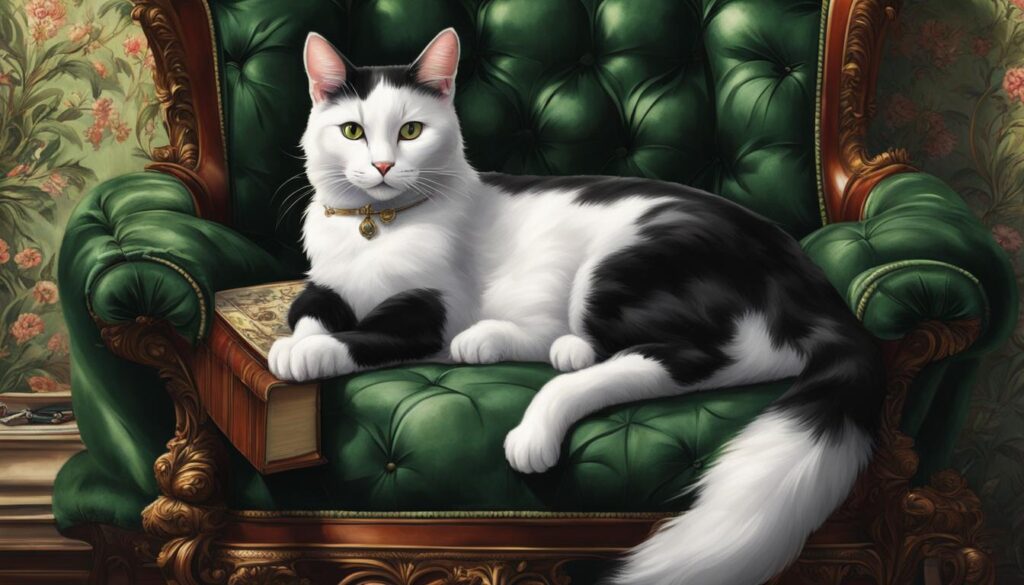
Furthermore, cats in Victorian literature also serve as catalysts for plot progression and character development. They often play pivotal roles in the lives of their human counterparts, showcasing the intricate relationship between humans and felines during this period. Whether as enigmatic companions or agents of change, these feline characters add depth and intrigue to the literary works of the time.
In summary, cats in Victorian literature are emblematic of the era’s fascination with hidden motives and moral ambiguity. They symbolize deceit and treachery, while also serving as catalysts for plot progression and character development. These feline characters encapsulate the complex relationship between humans and cats during the Victorian era, leaving their indelible pawprints on the pages of literary history.
Fictional Cats in Novels
When it comes to fictional cats in novels, authors have crafted a delightful array of feline characters that have left a lasting impression on readers. These cats not only add an element of whimsy and charm to the stories they inhabit but also often serve as catalysts for adventure and companionship to their human counterparts.
One such memorable feline character is Azrael from Stephen King’s Doctor Sleep. Azrael, a perceptive and intuitive cat, possesses an uncanny ability to sense danger and protect those in need. His mysterious nature and unwavering loyalty make him a beloved companion throughout the thrilling narrative.
Another notable fictional feline is Carbonel, the king of cats in Barbara Sleigh’s Carbonel series. Carbonel’s regal demeanor and wise counsel add depth to the fantastical world of talking cats and magic. His presence not only captivates readers but also drives the plot forward, as he guides the main characters on their quests.
“Cats choose us; we don’t own them.” – Kristin Cast
As Kristin Cast eloquently states, cats have a way of choosing us, and this sentiment holds true even in the realm of literature. These fictional cats in novels embody qualities that resonate with readers, such as independence, intelligence, and sometimes even a touch of mischief. They become companions, confidants, and sources of wonder within the pages of their respective novels.
| Novel | Fictional Cat | Description |
|---|---|---|
| The Cat in the Hat | The Cat in the Hat | A mischievous and fun-loving cat who brings chaos and excitement into the lives of two children on a rainy day. |
| Alice’s Adventures in Wonderland | The Cheshire Cat | A mysterious and enigmatic cat with a wide grin that appears and disappears at will, guiding Alice through her curious adventures. |
| The Book of Night with Moon | Rhiow | A heroic and brave Siamese cat who is a member of an ancient order of magical cats, protecting the world from supernatural threats. |
Whether they are kings, protectors, or mischievous companions, these fictional cats in novels have embedded themselves in literary history. They add depth, humor, and a touch of magic to the stories they inhabit, captivating readers of all ages. So the next time you curl up with a novel, keep an eye out for the intriguing and enchanting feline characters that may be waiting to whisk you away on a literary adventure.
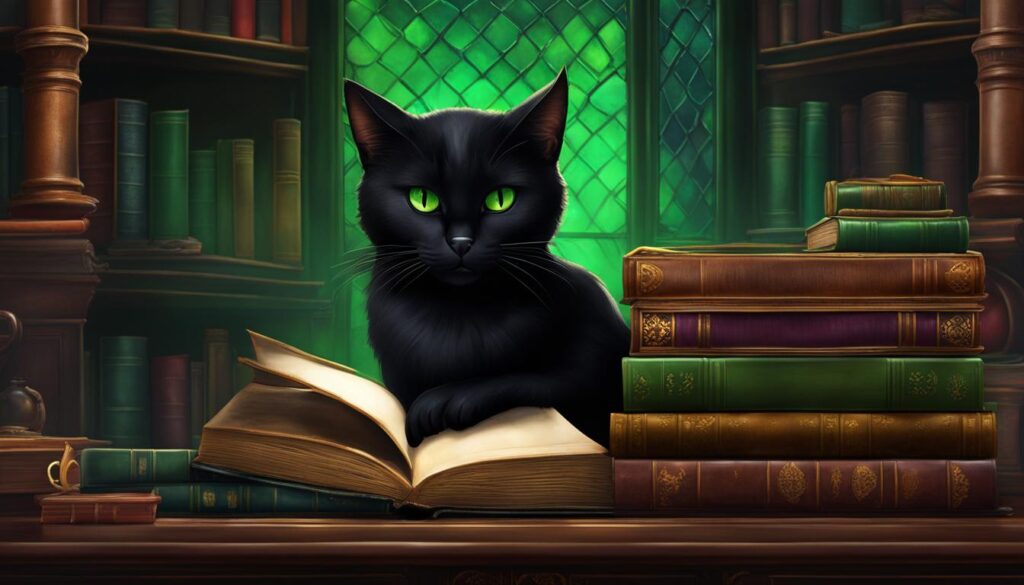
Cats as Literary Symbols
Throughout the ages, cats have served as powerful symbols in literature, representing a wide range of emotions, traits, and themes. These enigmatic creatures have intrigued authors and readers alike, adding depth and complexity to their works. From the cunning and mysterious Macavity in T.S. Eliot’s Old Possum’s Book of Practical Cats to the mischievous and adventurous Cheshire Cat in Lewis Carroll’s Alice’s Adventures in Wonderland, feline characters have become iconic symbols that resonate with readers on a profound level.
Cats have long been associated with intelligence and cunning, and these qualities are often reflected in their portrayal as literary symbols. Whether they are depicted as sly tricksters or wise companions, cats embody a sense of wisdom and intuition that captivates readers. Their ability to navigate the shadows and remain independent represents a desire for freedom and self-reliance that many humans aspire to. At the same time, cats’ elusive nature and unpredictable behavior also symbolize the enigma of life itself, reminding us of the inherent mysteries that surround us.
“What greater gift than the love of a cat.” – Charles Dickens
The Cat as a Symbol of Transformation
In addition to their intellect and mystery, cats are often used as symbols of transformation in literature. Through their aloof and independent nature, they represent the desire for personal growth and change. Cats possess a certain grace and elegance, effortlessly adapting to their surroundings and overcoming obstacles. This ability to transform and reinvent themselves serves as a powerful metaphor for human resilience and the potential for personal growth.
Furthermore, cats’ association with witchcraft and the supernatural adds an element of magic and mysticism to their symbolic nature. In many cultures, cats are believed to possess supernatural powers and the ability to traverse between worlds. This connection to the mystical realm makes them ideal symbols for exploring the boundaries between reality and fantasy, inviting readers to embrace their own sense of wonder and imagination.
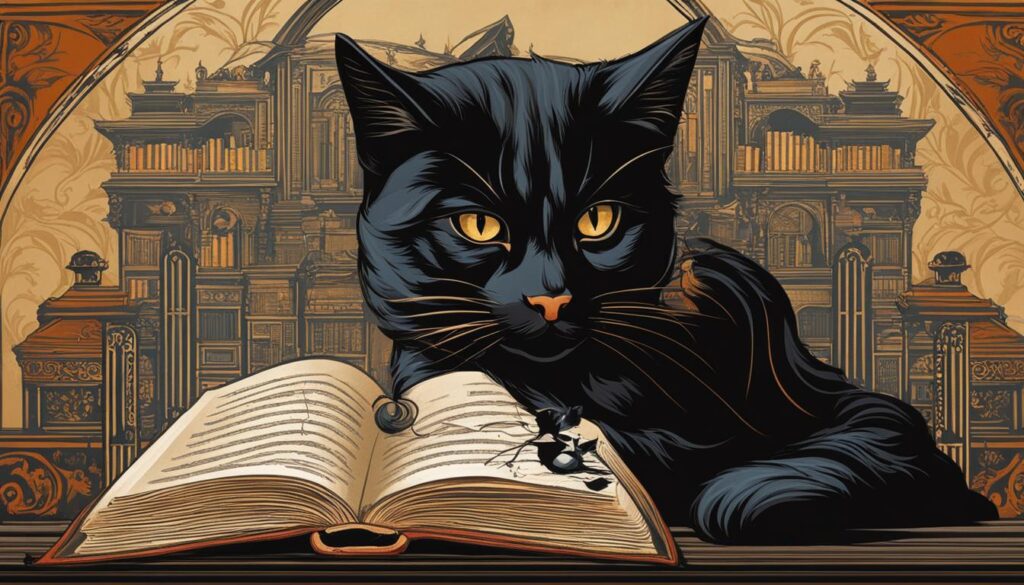
| Cat Symbol | Meaning |
|---|---|
| Wisdom | The cat represents intelligence, cunning, and wisdom. |
| Independence | By symbolizing freedom and self-reliance, cats remind us of the importance of individuality. |
| Mystery | Cats’ enigmatic behavior and unpredictable nature remind us of life’s inherent mysteries. |
| Transformation | Cats symbolize personal growth and the ability to adapt and reinvent oneself. |
| Supernatural | The association with witchcraft and the mystical realm adds an element of magic to their symbolism. |
In conclusion, cats have proven to be powerful and versatile symbols in literature. Through their portrayal as intelligent, independent, and mysterious creatures, they embody complex aspects of the human experience. Whether they represent wisdom, transformation, or the supernatural, cats in literature provoke curiosity, evoke emotion, and invite readers to unravel the layers of meaning hidden within their symbolic presence.
Cats in Poetry
When it comes to capturing the essence of cats, poets have long been enamored with these enigmatic creatures. From ancient Egyptian odes to modern works, cats in poetry have inspired verses that celebrate their grace, independence, and mysterious nature.
One notable example is T.S. Eliot’s collection of whimsical cat poems, “Old Possum’s Book of Practical Cats.” In these playful and imaginative verses, Eliot personifies cats with names like Macavity and Mungojerrie, each embodying unique characteristics and traits. These poems not only highlight the diversity of feline behavior but also invite readers to reflect upon the multifaceted nature of cats.
“The Naming of Cats is a difficult matter,
It isn’t just one of your holiday games;
You may think at first I’m as mad as a hatter
When I tell you, a cat must have THREE DIFFERENT NAMES.”
From ancient times to the present day, cats in poetry have enchanted readers with their elusive charm. Whether it’s the evocative imagery of ancient Egyptian lamentations or the whimsical rhymes of modern poets, these poetic portrayals capture the essence of cats and invite us to appreciate their unique qualities.
Table: Famous Cat Poems and Poets
| Poem | Poet |
|---|---|
| “The Lamentations of a Cat” | Unknown |
| “The Love Song of J. Alfred Prufrock” | T.S. Eliot |
| “The Cats Will Know” | Lesléa Newman |
| “Cat Heaven” | Cynthia Rylant |
| “The Cats Will Know” | Pablo Neruda |
These are just a few examples of the many poems that explore the mystique of cats. Through the artistry of poetry, these feline muses continue to inspire and captivate us, reminding us of the enduring appeal of these creatures in the literary world.
Conclusion
In conclusion, cats have truly made their mark on modern literary works. From children’s books to poetry, and from Shakespearean plays to contemporary novels, these enigmatic feline creatures continue to captivate and charm readers of all ages. As we journey through the pages of literature, we encounter cats that embody various traits and characteristics, adding depth and intrigue to the stories they inhabit.
Whether they serve as loyal companions, symbolic representations, or catalysts for adventure, these fictional cats bring a unique flavor to the narratives in which they reside. They exist not only as beloved characters but also as enduring symbols in their own right, representing everything from mischief to intelligence.
So, the next time you delve into a novel or explore a poem, be on the lookout for the cats that prowl between the lines. Embrace their grace, independence, and enigmatic nature. They are not mere creatures of fiction but rather timeless symbols that remind us of the enduring connection between literature and the captivating world of cats.
FAQ
Are there any famous cats in literature?
Yes, cats have played prominent roles in various literary works, from ancient tales to modern novels.
Which children’s books feature cats as characters?
Cats can be found in children’s classics like Alice’s Adventures in Wonderland and The Cat in the Hat.
Did William Shakespeare include cats in his plays?
Yes, Shakespeare used cats as symbols of witchcraft in plays like Macbeth.
How were cats portrayed in Victorian literature?
Cats were often depicted as deceitful or treacherous characters in Victorian novels, such as Oliver Twist.
Are there any fictional cats with memorable personalities?
Absolutely! Fictional cats like Azrael in Doctor Sleep and Carbonel in the Carbonel series have captivated readers with their unique traits.
Do cats have symbolic meanings in literature?
Yes, cats have served as powerful symbols in works like T.S. Eliot’s Old Possum’s Book of Practical Cats, representing various characteristics and traits.
Have cats been celebrated in poetry?
Yes, cats have been the subjects of poetic works for centuries, capturing their grace, independence, and enigmatic nature.
What is the overall significance of cats in literature?
Cats have left their mark on literary works throughout history, adding layers of meaning and becoming beloved characters in their own right.

